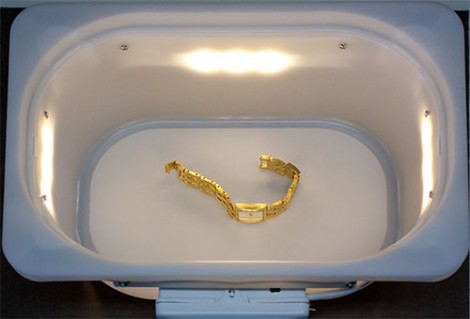
[Paulo] needed to photograph small objects on the go. Since you can’t always depend on ambient lighting conditions he built a battery operated light box which is easy to take along on his travels.
We’ve featured portable light tents before, but they still tend to be a bit too bulky for his tastes. He chose to go with a white plastic storage container from Ikea. It’s lightweight, and acts as a diffuser for the light sources. Four strips, each hosting three LEDs, were mounted on the exterior of the container. Half of a PVC pipe protects the boards while providing a way to fasten the strips in place using nuts and bolts. The driver board and batteries find a home inside of a travel container for a bar of soap.
He likes the results, especially when a glossy white piece of paper is used as a top reflector.















Hmm I’ve heard people complain about colour ranges in white LEDs. Wonder if it will affect this project :)
Not tooting my own horn, but I just submitted a similar (much smaller) concept on Thingiverse last week! I take alot of pictures of silver and gold coins and needed a similar setup! Great ideas from this project that I’m going to steal and use in my next revision. http://www.thingiverse.com/thing:28763
Hi,
Thanks for your interest in my project.
@Eirinn: What I usually do is always shoot in the camera’s RAW mode. This way, you can easily correct any co our cast. I’ve built another box based on CFLs and found those can be less stable/consistent than LEDs (warm-up time in the minutes range etc)
@ ITVirtuoso. Love your concept in thingiverse. A boost converter is nice in that it allows you to run several LEds of just a couple AA batteries…
RAW does not let you compensate more for what is not there. The problem is the gamut of the LEDs. With proper custom colour white balance you get the same result without the tedious post process hassle.
Like this build! Perhaps a lightbox on the bottom would be a handy feature for shadowless images.
Hi Voxnulla,
Thanks for your feedback; that’s interesting. I’m interested in learning more of what the color gamut limitation of the LEDs is. Do you have any references/articles on this you could point us to?
As for color balance compensation, this is very simple in today’s applications such as Photoshop or Lightroom (takes me one-click per photo). In any case, I have to do the same with the CFLs so for my workflow there is no difference. Another option is to set your camera to custom white balance and then shoot all photos like that. This way no post-processing is needed (you could even shoot jpeg this way).
Thanks,
Paulo
nice!
I like the spirit of it
and the execution of the skills.